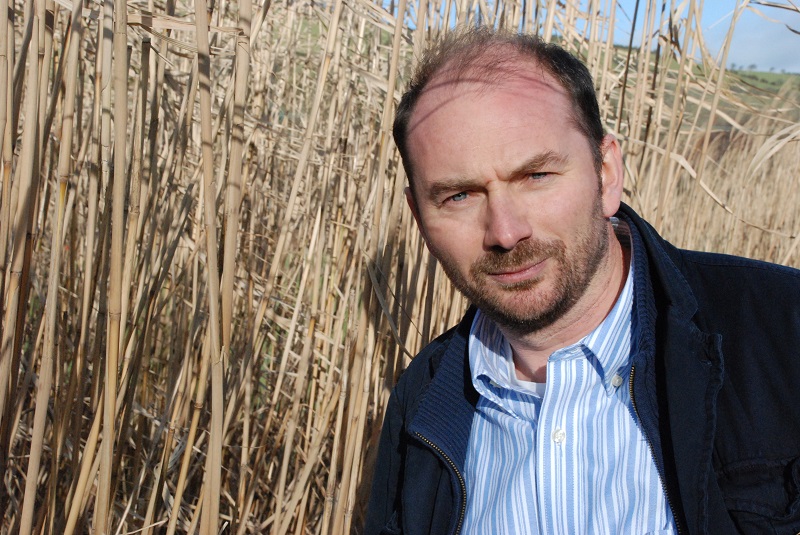Farming
Farming faces zero carbon challenge

AN AMBITIOUS new target to reduce greenhouse gas emissions to zero by 2050 will lead to significant changes in farming practices over the coming decades, according to a leading agri-environment specialist.
Professor Iain Donnison, Head of the Institute of Biological, Environmental & Rural Sciences (IBERS) at Aberystwyth University, was responding to the publication of ‘Net Zero: The UK’s contribution to stopping global warming’ published by the UK Government Committee on Climate Change.
Professor Donnison is an expert on agriculture and land use, which feature in the report in terms of targets for one-fifth of agricultural land to be used for forestry, bioenergy crops and peatland restoration.
According to Professor Donnison, such a reduction is very ambitious but achievable in Wales and the wider UK. “Land use can positively contribute towards achieving the net zero targets, but there are challenges in relation to emissions from agriculture especially associated with red meat and dairy,” said Professor Donnison.
“In IBERS we are already working on how to make livestock agriculture less carbon intensive and developing new diversification options for the farming of carbon. For example, net zero targets could provide significant diversification opportunities for both farmers and industries that make use of biomass and wood for the production of energy, materials including in construction and for wider environmental benefits.”
Professor Donnison added: “The report gives a clear message regarding the importance of the task and the role that the UK can play to compensate for past emissions and to help play a leadership role in creating a greener future.
“The report says it seeks to be based on current technologies that can be deployed and achievable targets. One-fifth of agricultural land is a very ambitious target but I believe that through the approaches proposed it is achievable (e.g. for bioenergy crops it fits in with published targets for the UK). This is based on the knowledge and technologies we have now regarding how to do this, and because right now in the UK we are developing a new agricultural policy that looks beyond the common agriculture policy (CAP). For example, the 25-year Environment plan published by Defra envisages payment for public goods which could provide a policy mechanism to help ensure that the appropriate approaches are implemented in the appropriate places.
“The scale of the change, however, should not be underestimated, although agriculture is a sector that has previously successfully responded to challenges such as for increased food production. The additional challenge will be to ensure that we deliver all the benefits we wish to see from land: food, carbon and greenhouse gas (GHG) management and wider environmental benefits, whilst managing the challenge of the impacts of climate change.
“The link is made between healthy diets with less red meat consumption and future reductions in greenhouse gas emissions from agriculture. This reflects that agriculture will likely go through significant change over the coming decades as a result of changes in consumer diets.
“Net Zero targets, however, could provide significant diversification opportunities for both farmers and industries that make use of biomass and wood for the production of energy, materials including in construction and for wider environmental benefits.”
Farming
‘Poor decision’ New Creamston housing condition overturned

A “POOR DECISION” agricultural worker-only imposed nearly 40 years ago has been removed from a Pembrokeshire property by county planners.
In an application recommended to be approved at the December meeting of Pembrokeshire County council’s planning committee, Tim and Cathy Arthur sought permission for the removal of an agricultural worker-only condition at New Creamson, Creamston Road, near Haverfordwest.
An officer report for members said the agricultural condition was imposed when the dwelling was built in 1988/89, with a later certificate of lawful development granted this year after it was proven the site had been occupied for more than 10 years on breach of that condition.
An application for a certificate of lawfulness allows an applicant to stay at a development if they can provide proof of occupancy over a prolonged period.
Speaking at the meeting, agent Andrew Vaughan-Harries of Hayston Developments & Planning Ltd told members the original agriculture-only condition was a poor decision by planners back nearly four decades ago.
“When this application was made in 1988-89 we go back to the Preseli District Council – I was still in school – it was only a 50-acre farm, it should never have been approved as it shouldn’t have been viable.
“The current applicants have owned it for the last 20 years; they’ve tried to grow apples but couldn’t make a go of it and then went in to holiday lets. We can’t enforce redundant conditions from bad decisions made years ago.”
Approval was moved by Cllr Brian Hall and unanimously supported by committee members.
Business
Cwm Deri Vineyard Martletwy holiday lets plans deferred

CALLS to convert a former vineyard restaurant in rural Pembrokeshire which had been recommended for refusal has been given a breathing space by planners.
In an application recommended for refusal at the December meeting of Pembrokeshire County Council’s planning committee, Barry Cadogan sought permission for a farm diversification and expansion of an existing holiday operation through the conversion of the redundant former Cwm Deri vineyard production base and restaurant to three holiday lets at Oaklea, Martletwy.
It was recommended for refusal on the grounds of the open countryside location being contrary to planning policy and there was no evidence submitted that the application would not increase foul flows and that nutrient neutrality in the Pembrokeshire Marine SAC would be achieved within this catchment.
An officer report said that, while the scheme was suggested as a form of farm diversification, no detail had been provided in the form of a business case.
Speaking at the meeting, agent Andrew Vaughan-Harries of Hayston Developments & Planning Ltd, after the committee had enjoyed a seasonal break for mince pies, said of the recommendation for refusal: “I’m a bit grumpy over this one; the client has done everything right, he has talked with the authority and it’s not in retrospect but has had a negative report from your officers.”

He said the former Cwm Deri vineyard had been a very successful business, with a shop and a restaurant catering for ‘100 covers’ before it closed two three years ago when the original owner relocated to Carmarthenshire.
He said Mr Cadogan then bought the site, farming over 36 acres and running a small campsite of 20 spaces, but didn’t wish to run a café or a wine shop; arguing the “beautiful kitchen” and facilities would easily convert to holiday let use.
He said a “common sense approach” showed a septic tank that could cope with a restaurant of “100 covers” could cope with three holiday lets, describing the nitrates issue as “a red herring”.
He suggested a deferral for further information to be provided by the applicant, adding: “This is a big, missed opportunity if we just kick this out today, there’s a building sitting there not creating any jobs.”
On the ‘open countryside’ argument, he said that while many viewed Martletwy as “a little bit in the sticks” there was already permission for the campsite, and the restaurant, and the Bluestone holiday park and the Wild Lakes water park were roughly a mile or so away.
He said converting the former restaurant would “be an asset to bring it over to tourism,” adding: “We don’t all want to stay in Tenby or the Ty Hotel in Milford Haven.”
While Cllr Nick Neuman felt the nutrients issue could be overcome, Cllr Michael Williams warned the application was “clearly outside policy,” recommending it be refused.
A counter-proposal, by Cllr Tony Wilcox, called for a site visit before any decision was made, the application returning to a future committee; members voting seven to three in favour of that.
Farming
Farmers Union of Wales Warns: Labour’s 5G Expansion Risks Rural Blackspots

FUW Joins Landowners in Urgent Call to Pause Controversial Telecoms Reforms
THE FUW (Farmers’ Union of Wales) has warned that rural communities face worsening mobile blackspots and farmers risk losing essential income if the Labour Government expands a telecoms policy blamed for stalling Britain’s 5G rollout.
In a letter to Digital Economy Minister Liz Lloyd, the FUW aligns with landowners, investors, and property experts demanding a halt to Part 2 of the Product Security and Telecommunications Infrastructure (PSTI) Act 2022. Extending the 2017 Electronic Communications Code (ECC) would “entrench failure,” the group argues, sparking more stalled renewals, site losses, and legal battles just as Wales needs swifter rural connectivity.
The 2017 reforms empowered operators to cut mast rents—often by 90%—from hosts like farmers, councils, and NHS trusts. Far from boosting rollout, they’ve ignited over 1,000 tribunal cases since 2017, versus 33 in the prior three decades. Rural goodwill has eroded, with hosts now eyeing exits.
“Every lost mast isolates households, schools, and businesses,” the FUW states. “No public subsidy can fix this systemic damage.”
A survey of 559 hosts (via NFU, CLA, BPF) shows:
- 35% considering full withdrawal.
- 70% of expired lease holders facing operator legal threats.
Landowner Ted Hobbs in New Tredegar shares the pain: “My 1995 Vodafone lease was £3,500 yearly, renewed in 2010 at the same rate. It expired May 2025—now they demand a slash, backed by the Code. This is confiscation, not partnership.”
Labour’s push forward—despite earlier opposition and a critical consultation—ignores these red flags.
FUW President Ian Rickman adds: “Farmers hosted masts in good faith for rural connectivity. Punishing them with rent cuts sabotages Wales. Halt this now, restore trust, and incentivise real progress.”
The coalition urges ministers to reopen dialogue before deepening rural divides. Wales can’t afford more policy missteps.
-

 Crime2 days ago
Crime2 days agoDefendant denies using Sudocrem-covered finger to assault two-month-old baby
-

 Crime1 day ago
Crime1 day agoPembroke rape investigation dropped – one suspect now facing deportation
-

 Crime6 days ago
Crime6 days agoMan denies causing baby’s injuries as police interviews read to jury
-

 News1 day ago
News1 day agoBaby C trial: Mother breaks down in tears in the witness box
-

 Crime2 days ago
Crime2 days agoLifeboat crew member forced to stand down after being assaulted at Milford pub
-

 Crime3 days ago
Crime3 days agoDefendant denies causing injuries to two-month-old baby
-

 Crime3 days ago
Crime3 days agoPembrokeshire haven master admits endangering life after speedboat collision
-

 Crime14 hours ago
Crime14 hours agoMother admits “terrible idea” to let new partner change her baby’s nappies alone
















